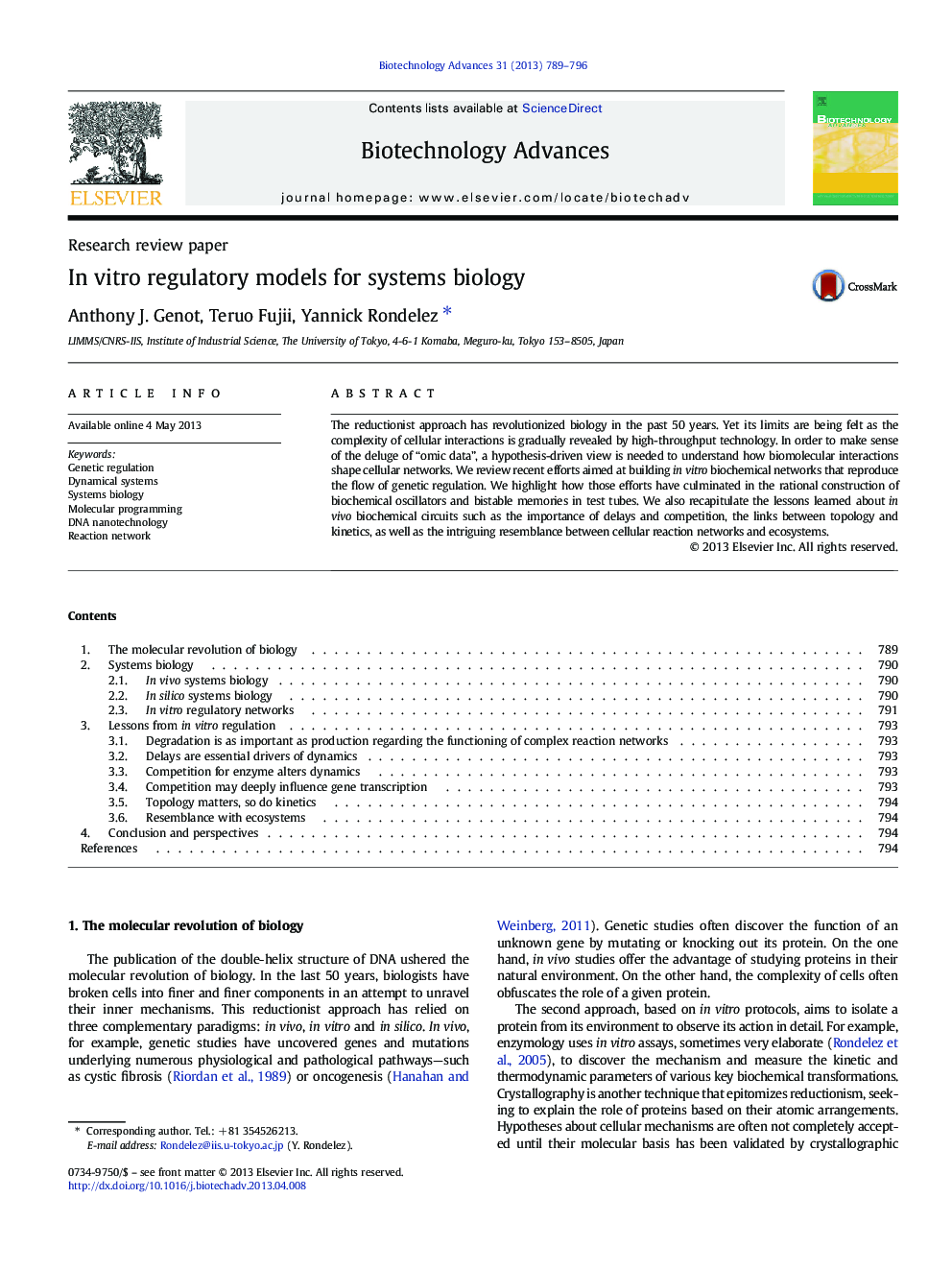| Article ID | Journal | Published Year | Pages | File Type |
|---|---|---|---|---|
| 14341 | Biotechnology Advances | 2013 | 8 Pages |
The reductionist approach has revolutionized biology in the past 50 years. Yet its limits are being felt as the complexity of cellular interactions is gradually revealed by high-throughput technology. In order to make sense of the deluge of “omic data”, a hypothesis-driven view is needed to understand how biomolecular interactions shape cellular networks. We review recent efforts aimed at building in vitro biochemical networks that reproduce the flow of genetic regulation. We highlight how those efforts have culminated in the rational construction of biochemical oscillators and bistable memories in test tubes. We also recapitulate the lessons learned about in vivo biochemical circuits such as the importance of delays and competition, the links between topology and kinetics, as well as the intriguing resemblance between cellular reaction networks and ecosystems.
